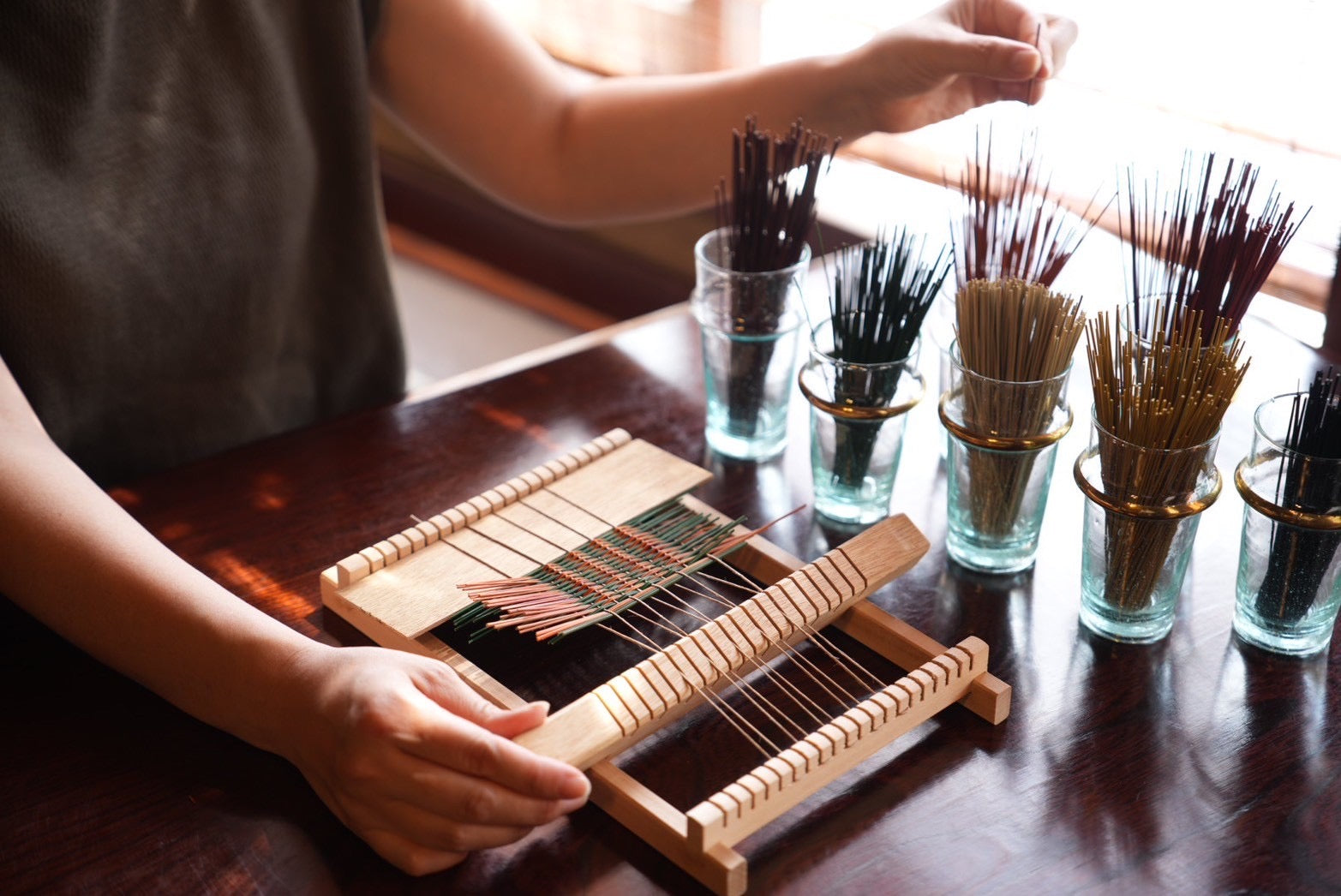Cover photo courtesy of Takimoto Gozaten.
This is the last installment of my journey to Ishikawa where I had the opportunity to learn about different craftsmanship like metalworking, and pottery and glass making. On this final day, I got to visit a historic commercial area called Hokkoku Torimachi, once home to silk goods and tatami wholesalers. Meeting the area's passionate townspeople along the way, I could experience its rich history and traditional culture amidst a charming streetscape.

We started the tour at Takimoto Gozaten, a nearly 250-year-old tatami shop run by 26th-generation Tsuji Naoko. The building itself was established in 1480! The shop blends historical charm with rustic decor. Along with tatami mats, they offer a variety of knick-knacks, clothing, antiques, and accessories. You can even make your own tatami coaster here made of igusa grass. Komatsu, once a leading producer of igusa grass in Japan's northern regions, thrived despite harsh cold conditions, as most grass was grown down south where it was warmer. However, the number of grass farmers in Komatsu has drastically declined over the years, leaving only one remaining: Takimoto Gozaten.

We then head to a 360-year old tea shop being run by its 12th generation owner. The shop holds significant historical importance: its ancestors were the first to successfully cultivate tea in Ishikawa and the surrounding area, pioneering Kaga tea. Kaga tea (called Kaga Bocha) is well-known for being a unique roasted green tea made from stems! When the region's best tea leaves were exported, it left locals with only stems. In a classic case of turning lead into gold, the locals decided to use the unwanted stems into their now famous Kaga Bocha tea.
This neighborhood truly embodies what makes it special: connections forged through shared passion of local craft and history for hometown. Machiya Bunko, a community space, bookstore, and gallery is centered around exchanging pre-loved books, and shows the sense of community. Being in Machiya Bunko's beautifully preserved traditional townhouse with its interior adorned with local artisans' decorations was a lovely experience. They also make their own jams from local ingredients. The best part is that they are named as puns from famous book titles and are free from preservatives and artificial coloring. They will prepare special menus for you if your are vegan, gluten-free, or vegetarian as well if told ahead of time.
Inspired to take a trip to Japan? Whether you need a guide, transportation, and accommodations, or want to experience this yourself, get in touch! We can make it happen.

